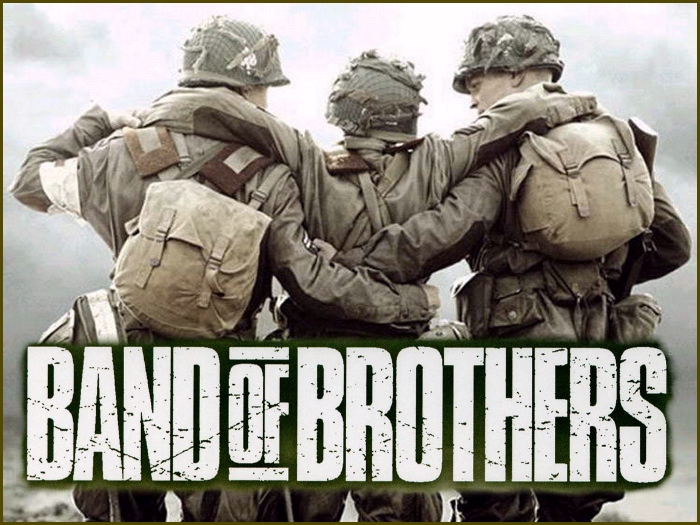
101st
Airborne Division
THE MEANING OF THE STENCILS ON THE HELMET
During the broadcast of the tv-series 'Band of Brothers', you may have
noticed that paratroopers of the 101st Airborne Division wore on the side of their helmet
a white stencil. After the drop it was of importance that the men were quickly assembled
and went to their own unit. In the chaos of the jump many men got mingled. Every unit or
supporting battalion had for that purpose a white identity mark on both sides of the helmet.
Just prior to the drop in Normandy they were placed only on the outerhelmet, but later also
on the inner helmet. Some regiments got an additional marker on one site of the stencil to show
to which headquarters (tick at 12 o'clock) or battalion (tick under or sideways of the stencil) the bearer belonged.
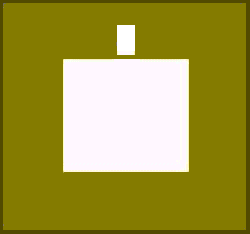
101st
Airborne Division HQ
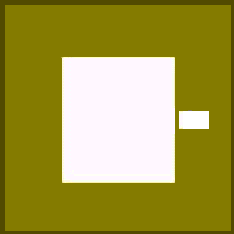
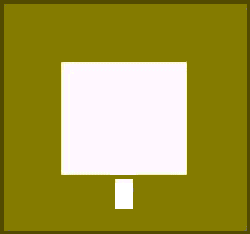
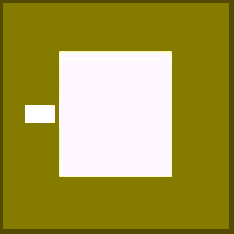
From L. to
R.: Divisional Signal Company, 426th Abn.Qm. Co. en 801st Abn.Ord. Co.
THE
STENCILS OF THE PARACHUTE INFANTRY
REGIMENTS
The Parachute Infantry Regiments had playingcard motives
(see below). After the jump over Normandy it was noticed that the 3th
battalion of the 506th had their 'tick' on the wrong site, in stood at 3 o'clock
instead of 9 o'clock (the position of the 1st battalion). Later in the war it was corrected. Senior
officers and non-commissioned officers (NCO.) wore an extra tick on the back of their helmet. This
became a target for sharpshooters and was in many cases removed during the war.
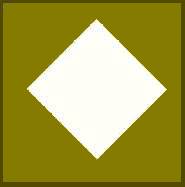
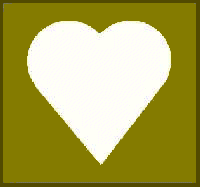
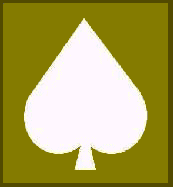
From L. to
R.: 501st, 502nd en 506th Parachute
Infantry Regiment
THE
STENCILS OF SUPPORTING UNITS
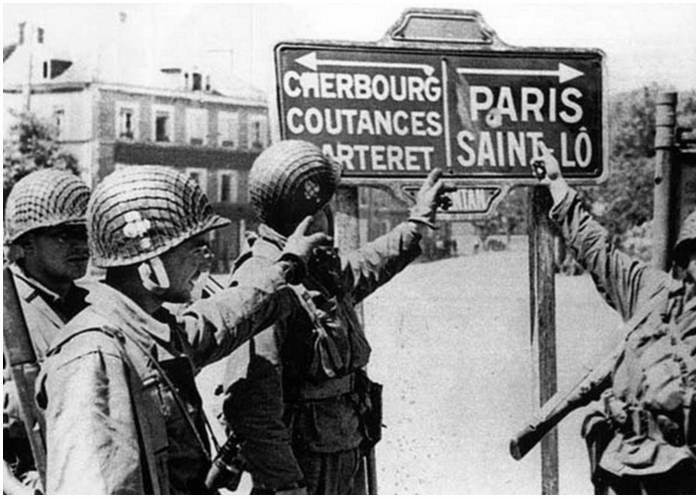
Para's of the 327th Glider
Infantry Regiment point at their target,...
Below are two stencils of supporting units. The first is the (three leaved)
clover of the 327th Glider Infantry Regiment. A regiment that were brought in by gliders.
The second is a white triangle of the 81st Airborne Anti-Aircraft and
Anti-Tank Battalion.
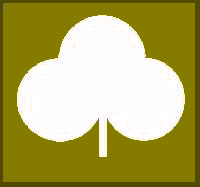
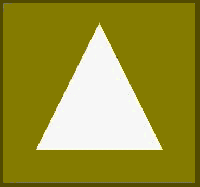
Left: 327st Glider Infantry Regiment,
Right: 81st Airborne
Anti-Aircraft and Anti-Tank Batt.
Below are white circles to be seen of the artillery units of 101st Airborne Division.
The 377th and 463rd Parachute Field Artillery and the 907th and 321st Glider Field Artillery could be
recognized by these white 'balls'.
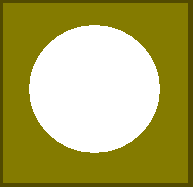
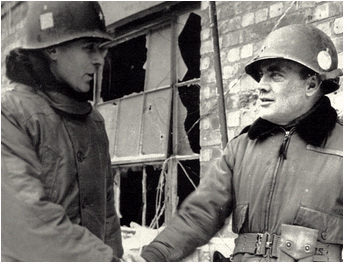
Left: 377th and 463rd Parachute Field Artillery and the 907th and
321st Glider F.A.
Right: General Taylor (l.) shakes hands with Gen.
McAuliffe
The next two units of the 101st Airborne Division had a good recognizable symbol.
The first was a white cross of 326th Airborne Medical Company. The engineers of the 101st wore a capitol
'E' for a symbol. It stood for the 326th Airborne Engineer Battalion.
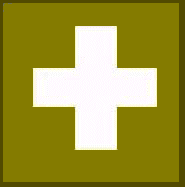
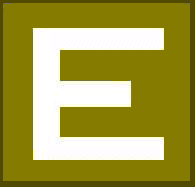
Left: 326th Airborne Medical Company,
Right: 326th Airborne
Engineer Battalion
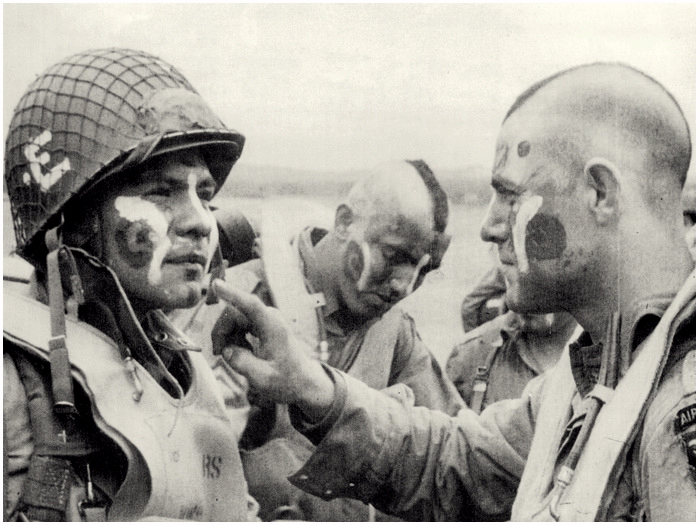
Jake McNiece (right) paints the face
of Mariano Ferra van C-Comp., 326th AEB
(notice the letter 'E' on the helm, from Engineer Battalion )
Finaly a symbol that was just on a few helmets of the 101st Airborne Divsion.
These, a lyre, were only carried by the members of the Division Band.
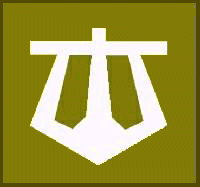
The 'lyre' of the 101st
Division Band
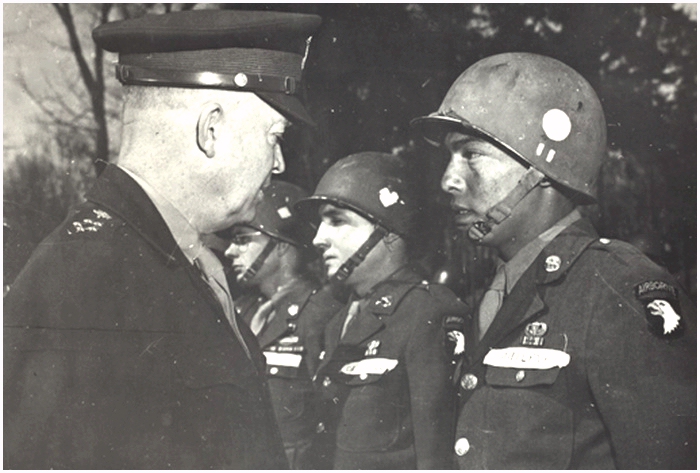
March 1945, the 101st Airborne Division, which
took a crucial role in the defence
of Bastogne during the Battle of the Bulge, received the Presidential
Unit Citation
(a nice puzzle, from back to front: RHQ/501 PIR, 1st Bn 502 PIR, and the 463rd PFAB)
Above a picture is shown with a symbol of the 463rd Parachute Field Artillery Battalion. As may be noted,
there are two ’ticks’ under the symbol (the round ‘bomb’). This was done because there were five artillery
units attached to 101st Airborne Division. The HQ had the ‘tick’above the ‘bomb’, the 321st had the ‘tick’
on the right, the 377th under it, the 907th had the ‘tick’ left of the symbol, and so, the 463 PFAB received
a double 'tick' on the underside. In the picture we see General Eisenhower talking to a native of America,
the Indian Milford Shopteese of Abilene, Kansas.
THE 'TICK'
AND HOW THIS WAS PLACED
Below is a explanation of the placement of the 'tick' near the symbol of the unit. As example I show four 'diamond' symbols of the 501st Parachute
Infantry Regiment (PIR).
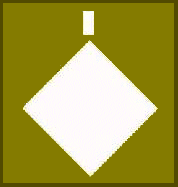
Above: With the tick at 12 o'clock, HQ
(headquarters), 501st P.I.R.
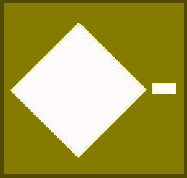
Above: With the tick at 3 o'clock, 1st Battalion,
501st P.I.R.
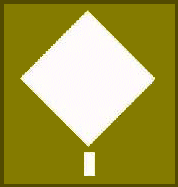
Above: With the tick at 6 o'clock, 2nd battalion,
501st P.I.R.
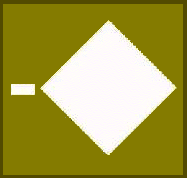
Above: With the tick at 9 o'clock, 3rd Battalion,
501st P.I.R.
Beside the symbols on the helmets and the 'tick',
the division and units of the 101st Airborne Divison had their own code in the field.
Below is a list of these codes:
101st Airborne Division : KANGAROO
101st Abn. Hq en Hq Comp. : KLAXON
101st Abn. Recon. Platoon. : KING
101st Divisional Signal Comp. : KILOWATT
426th Abn.Qm. Co. : KITCHEN
801st Abn.Ord. Co. : KILDARE
326th Abn.Eng. Bn. : KIWI
327th Glider Inf. Reg. : KEEPSAKE
501st Para. Inf. Reg. : KLONDIKE
502nd Para. Inf. Reg. : KICKOFF
506th Para. Inf. Reg. : KIDNAP
Divarty Hq en Hq. Btry : KINGFISH
321st Glider FA. Bn. : KANSAS
337th Para. FA. Bn. : KITE
907th Glider FA. Bn. : KILOGRAM
463rd Para. FA. Bn. : KEYNOTE
326th Abn. Medical Co. : KINDERGARTEN
81st Abn. AA Bn. : KENTUCKY
On top of this page a still is used from the HBO TV series
'Band of Brothers'. Below is a total view of the situation shown. A wounded paratrooper was brought back
behind the lines during the Battle of the Bulge, this shot was probably the inspiration
for the picture in BoB.
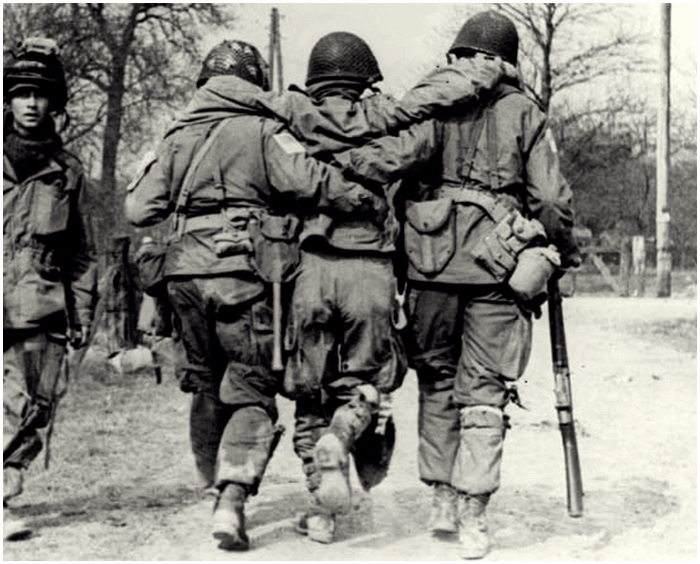
Coincidence or by purpose,...
the above could be the inspiration,...
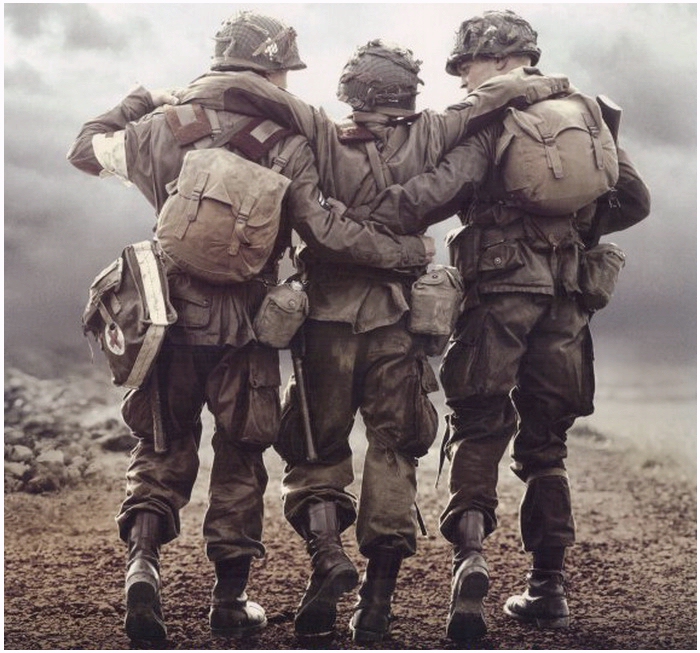
Your are now invited to go back to the homepage of 'Normandy';
|